A new 911 Turbo S Exclusive Series has been unveiled by Porsche - becoming the most powerful and unique 911 Turbo S ever.
Porsche
Porsche Cayenne sets new aircraft pull World Record
Porsche has set a new Guinness World Record for the ’Heaviest aircraft pull by a production car’ - as a Cayenne successfully towed an Air France A380 at Charles de Gaulle Airport.
‘Brand new’ Porsche 964 Carrera RSR up for auction
A brand new, 1993 Porsche 911 Type 964 Carrera RSR that has remained undriven for 24 years is to go to auction this May.
Audi and Porsche join forces for shared vehicle architecture
The green light has been given for a shared vehicle architecture strategy between German car giants Audi and Porsche.
Porsche adds Platinum Edition to Cayenne S
High-spec Platinum Editions of the Cayenne S and Cayenne S Diesel have joined the line-up of Porsche's large SUV.
Convertible, Coupe, News, Sports Car
Porsche adds GTS models to 911 range
The Porsche 911 line-up has been expanded with the addition of new GTS models with more power and more performance.
BMW, Daimler, Ford and VW join forces for Europe-wide charging network
A ‘Memorandum of Understanding’ has been agreed between the BMW Group, Daimler AG, Ford Motor Company and Volkswagen Group including Audi and Porsche to create the highest-powered charging network in Europe.
4x4, Coupe, Grand Tourer, Hybrid, News, Sports Car
New Panamera 4 E-Hybrid set for Paris debut
The Paris Motor Show will see Porsche unveil the fourth model in the four-door Panamera line: the 4 E-Hybrid with all-wheel drive and an electric range of 50 kilometres.
4x4, News, Sports Car, SUV
Porsche Macan Turbo gets Performance Package
Porsche launches Digital Lab
As part of a digital transformation strategy to identify and test innovative IT solutions, Stuttgart-based sportscar manufacturer, Porsche has opened a Digital Lab in Berlin.
Classic car, Events, Hypercar, Luxury, News
80-strong supercar line-up at Salon Privé
This year’s Pirelli Prestige & Performance Competition at Blenheim Palace is set to feature some of the greatest supercars of the last forty years.
Specialist sports car maker RUF now finally in UK
Manufacturer of Porsche-based sports cars - RUF Automobile - is to open its first UK office in partnership with luxury and specialist vehicle brokers, thecarspy.net
Saloon, Sports Car, News, Luxury
New Porsche Panamera unveiled
Porsche unveils new 718 Cayman
The new 718 Cayman – the fourth generation of Porsche’s mid-engined, two-seater sports coupé – is now available with the new four cylinder turbo ‘boxer’ engines fitted to the 718 Boxster.
Coupe, Sports Car, News, Design
Techart Porsche 911 GT3 RS kit unveiled
Porsche adds new entry level Macan
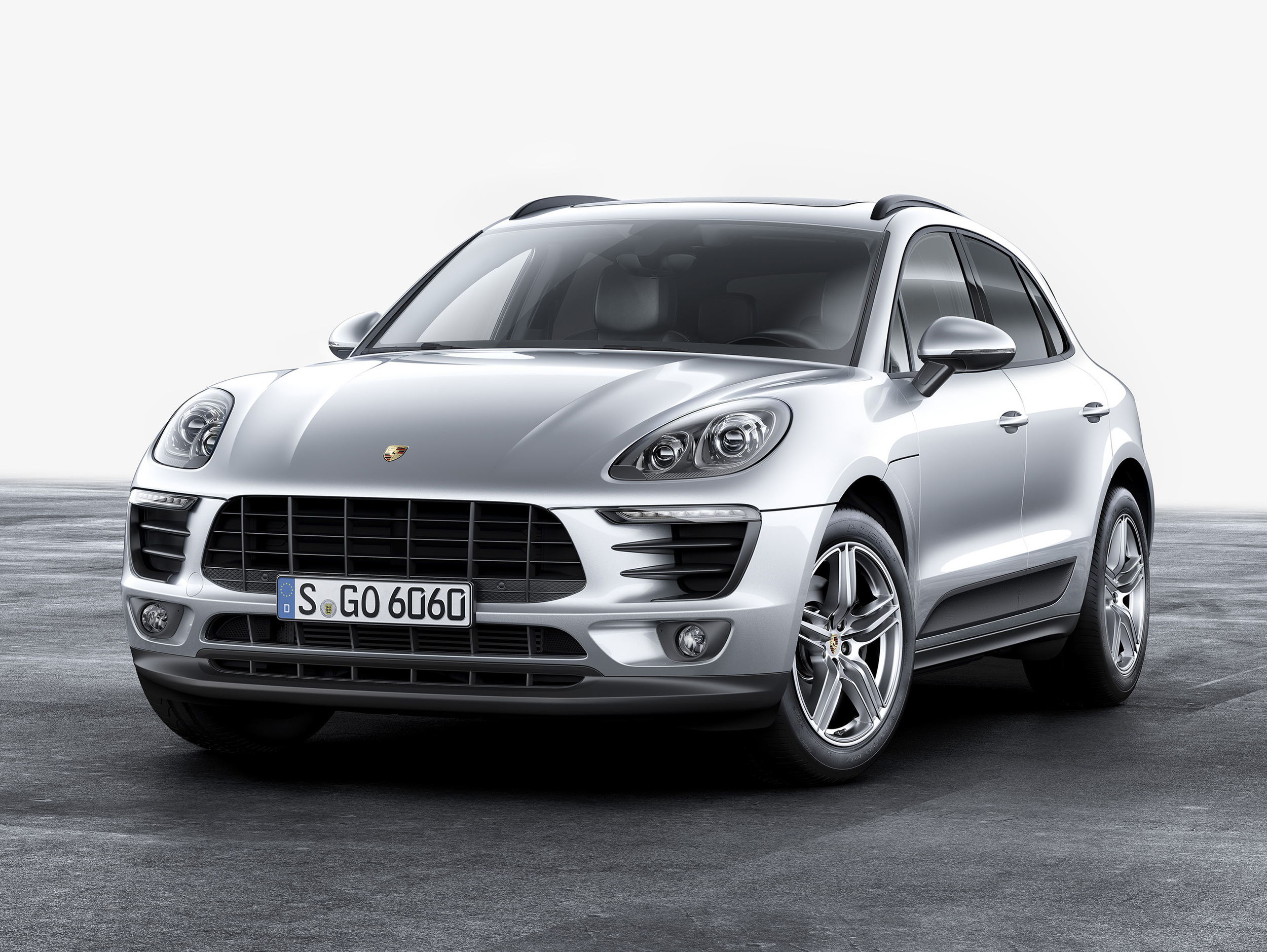

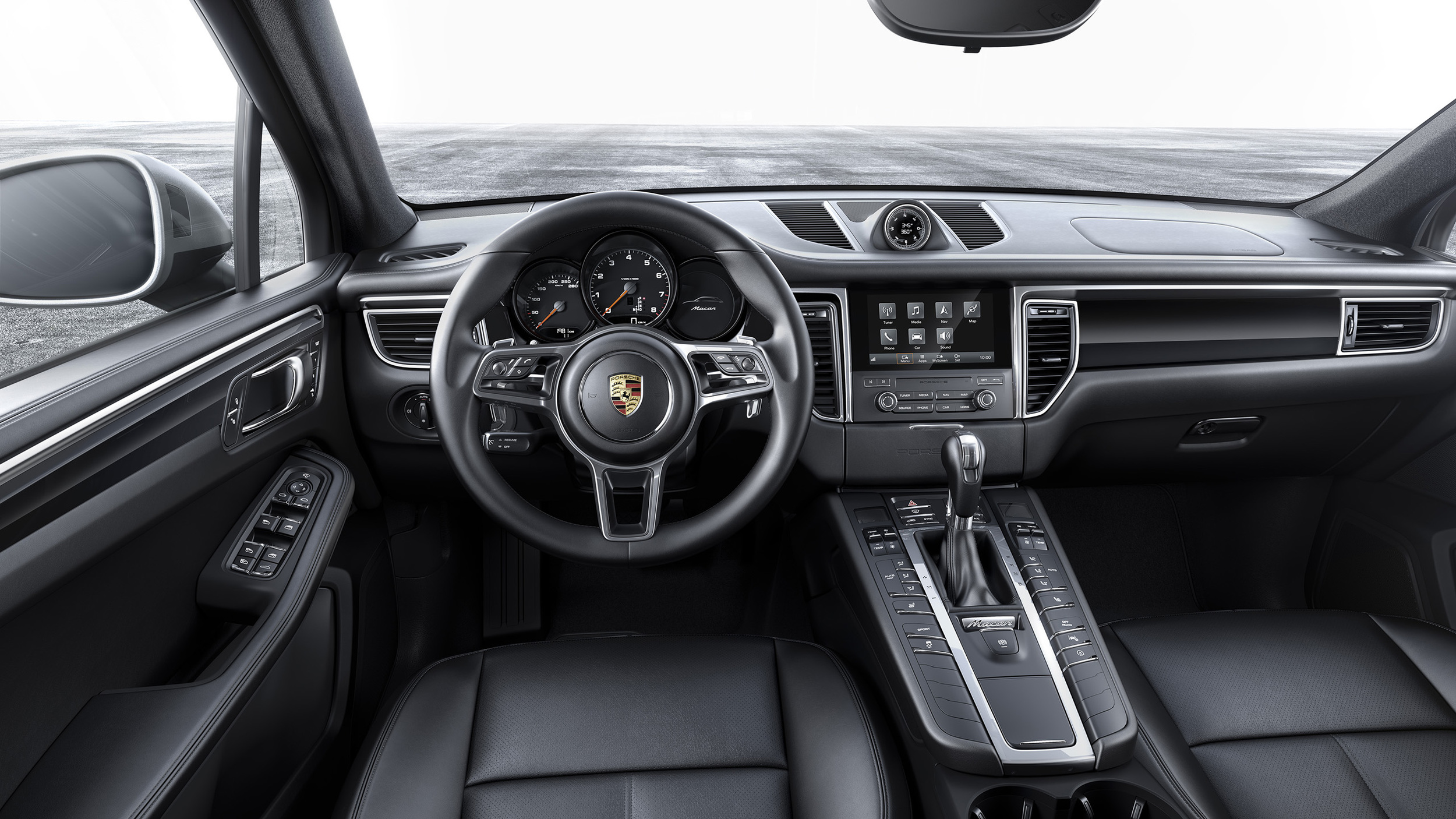
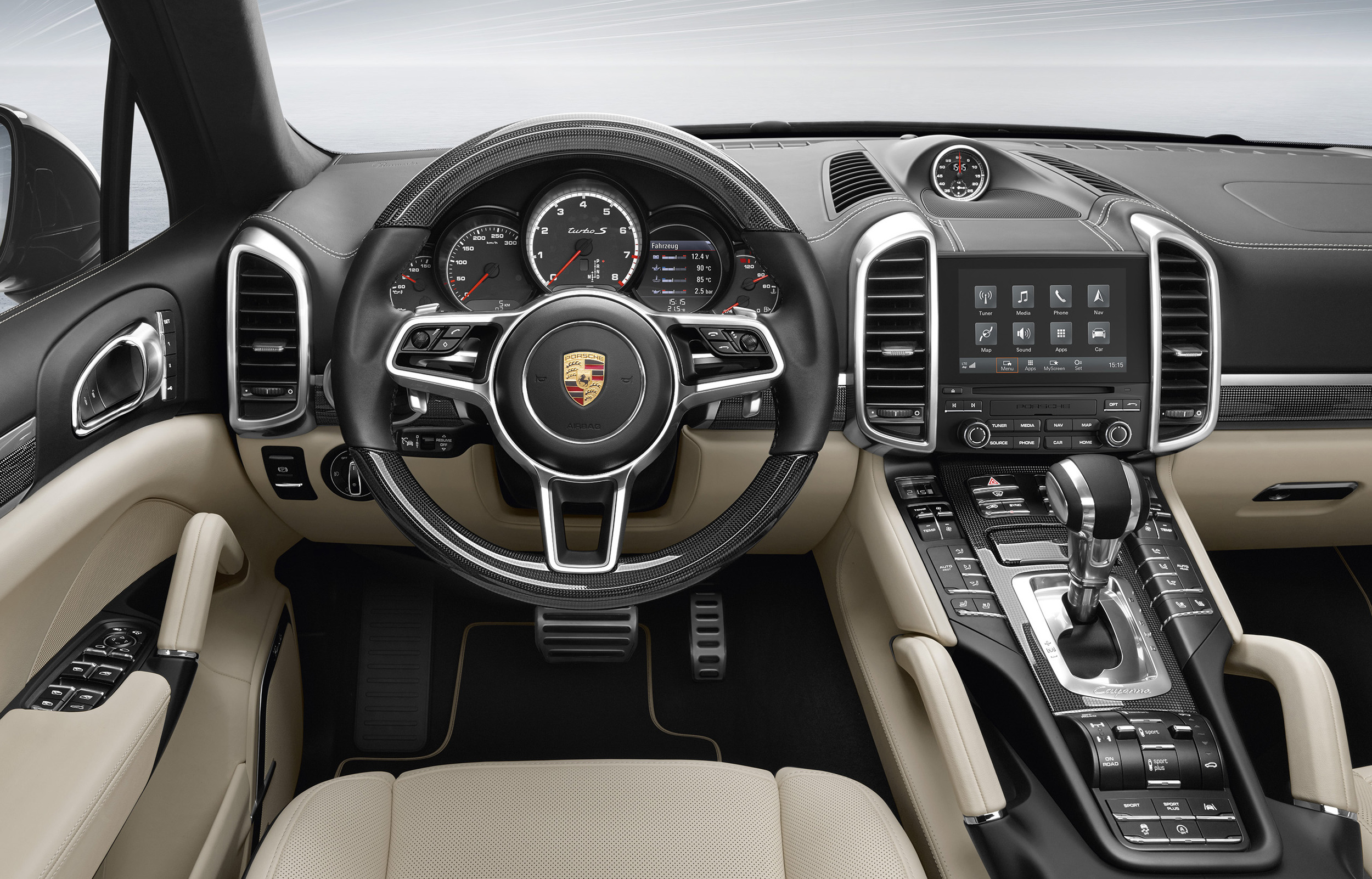
Porsche has extended its Macan line-up by adding a new entry-level model.
The 252 hp turbocharged two-litre engine in the Macan was specifically tailored for this model and is mated to a seven-speed PDK dual-clutch transmission as standard. As a result, the entry-level Macan delivers a 0-62mph time of 6.7 seconds, and with the optional Sport Chrono-Package, this time is reduced to 6.5 seconds. The top speed is 142mph. In terms of fuel consumption, the Macan consumes between 31.7mpg to 39.2mpg according to the NEDC.
Many of the vehicle’s standard features are the same as those in the S models, for example, comfort seats with electric eight-way adjustment on the driver’s side, Alcantara middle seat panels, the latest generation of Porsche Communication Management (PCM), lane-departure warning system and a powered tailgate. The new entry-level model only differs from other more powerful models in its details - exterior distinguishing characteristics include side window trim strips in black, also black brake callipers sit behind the 18-inch wheels and the exhaust system has two single tailpipes made of brushed stainless steel.
Sporty driving dynamics are ensured, says the German car maker, by the standard Porsche Traction Management PTM active all-wheel drive system. An air suspension system with levelling control including the PASM with adaptive dampers is available as an option.
Market launch for the new Porsche Macan will take place in June 2016 with prices expected to start around £43k OTR.
Coupe, News, Sports Car, Motorshow
New Porsche 911 R inspired by 1967 racer

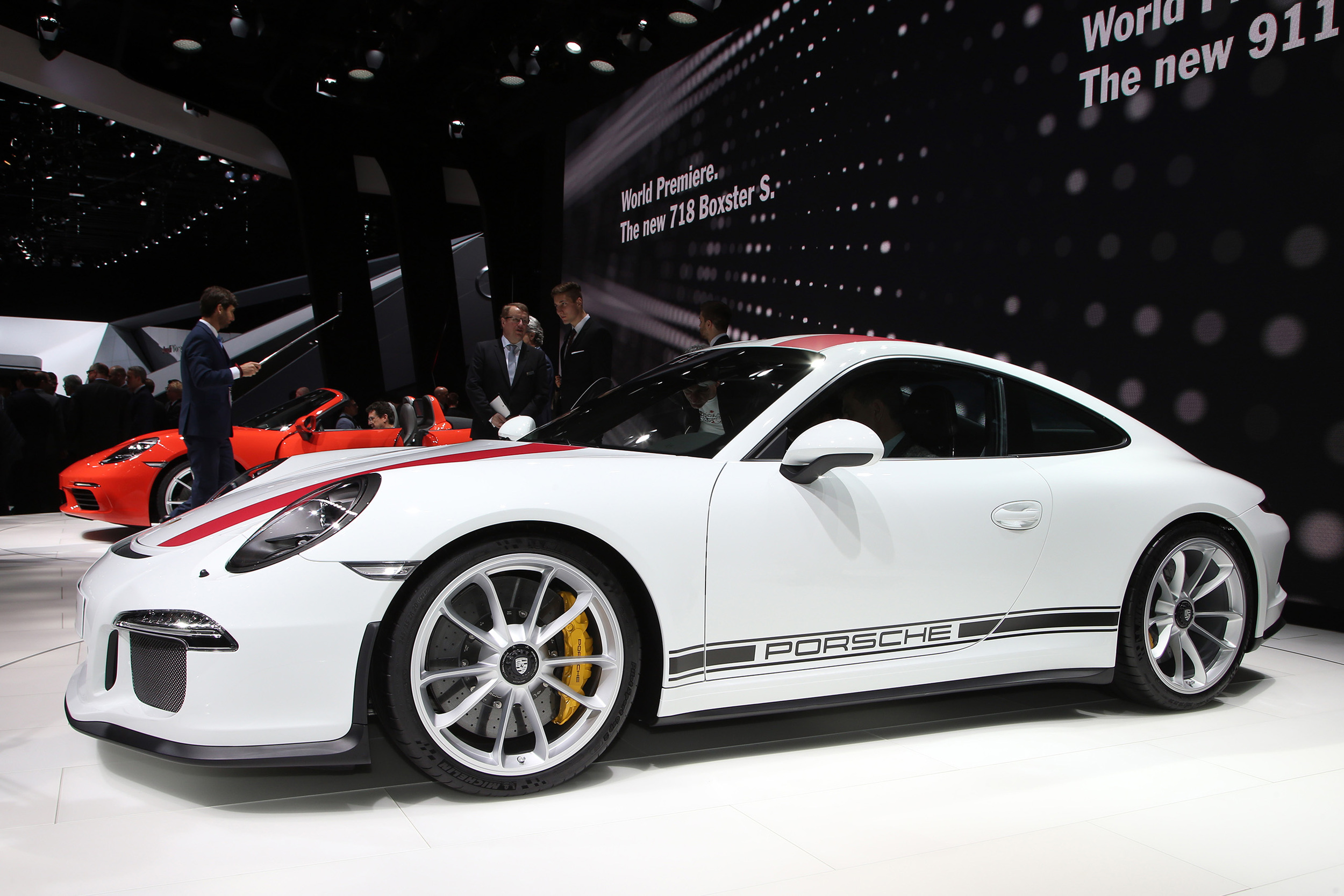
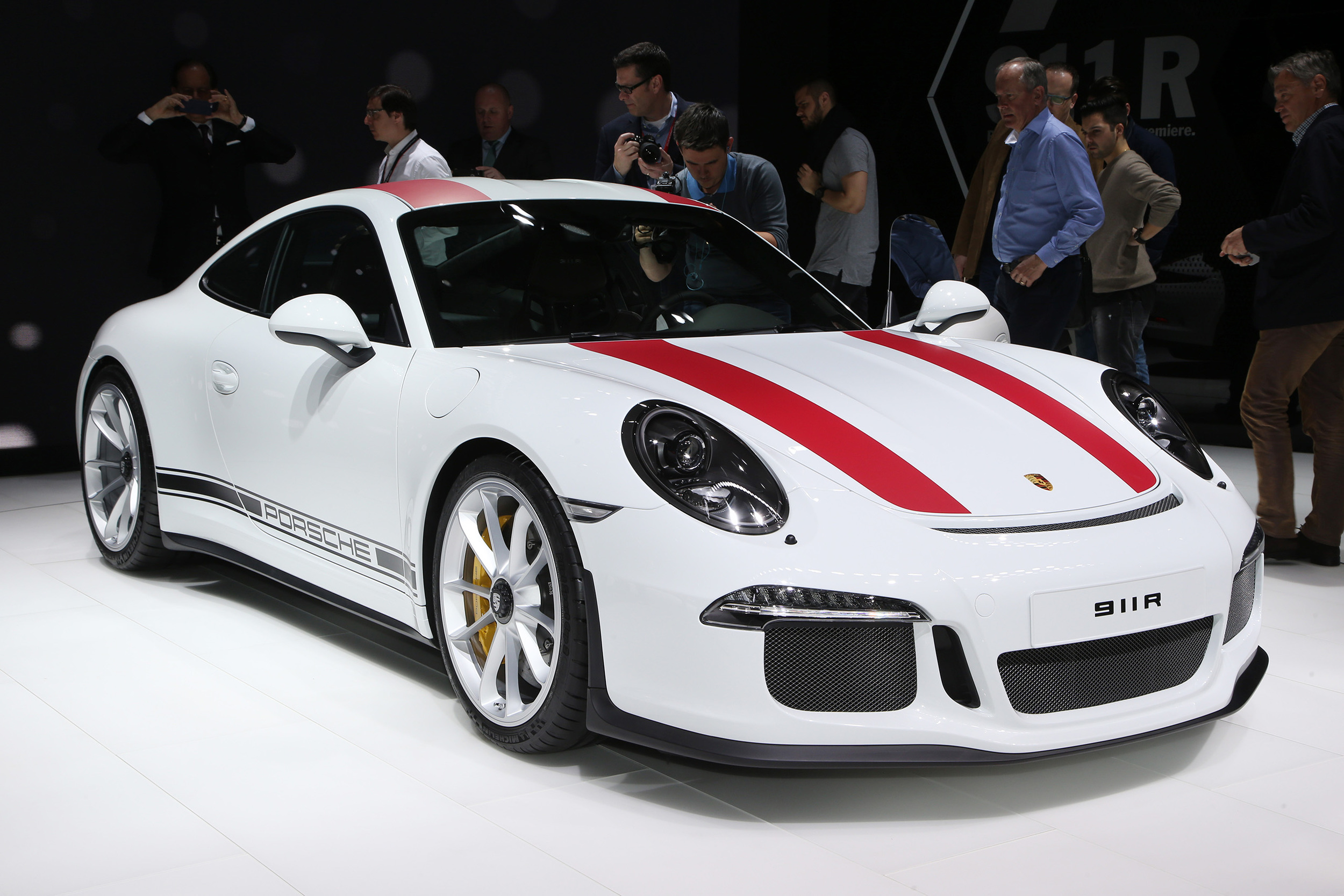

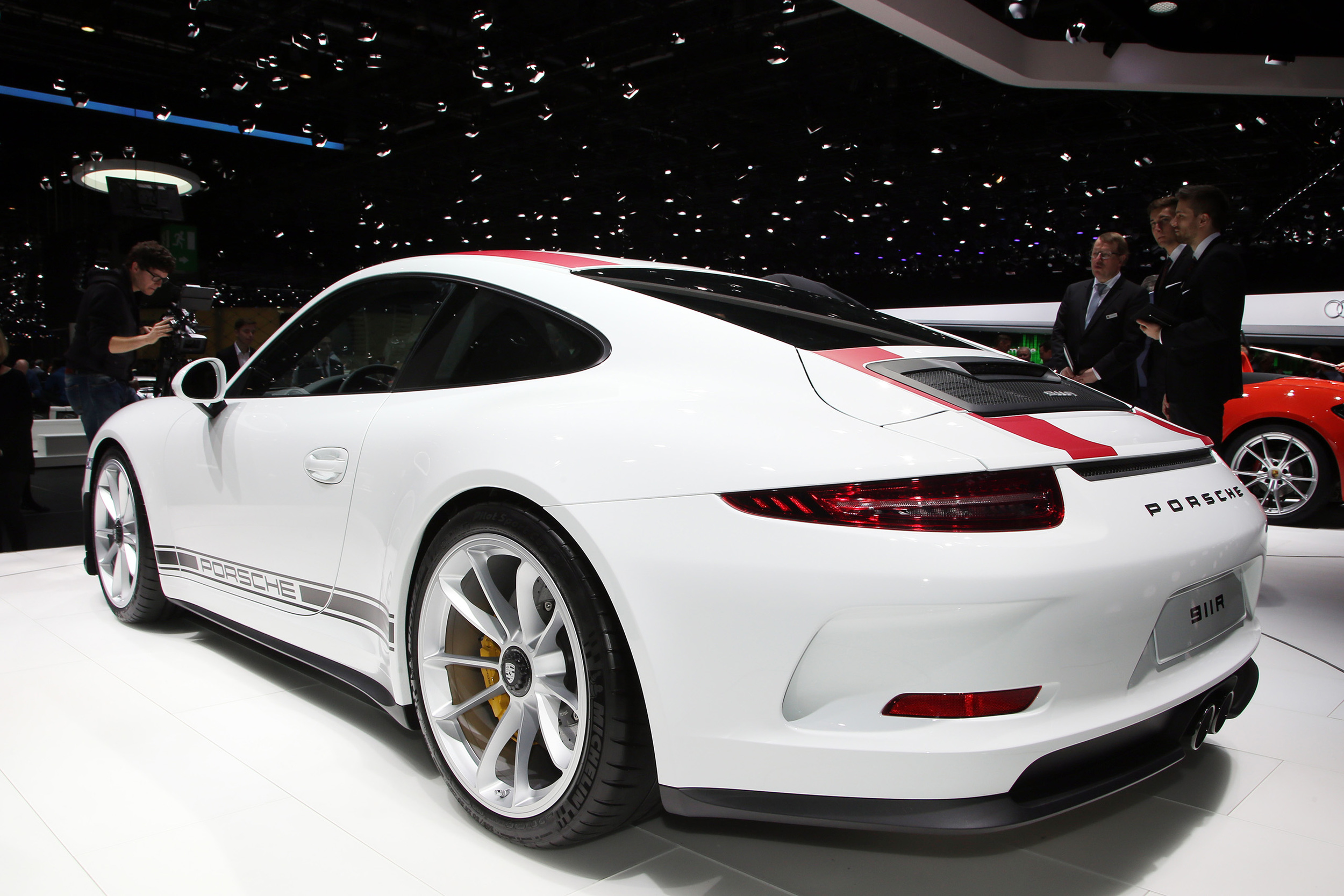
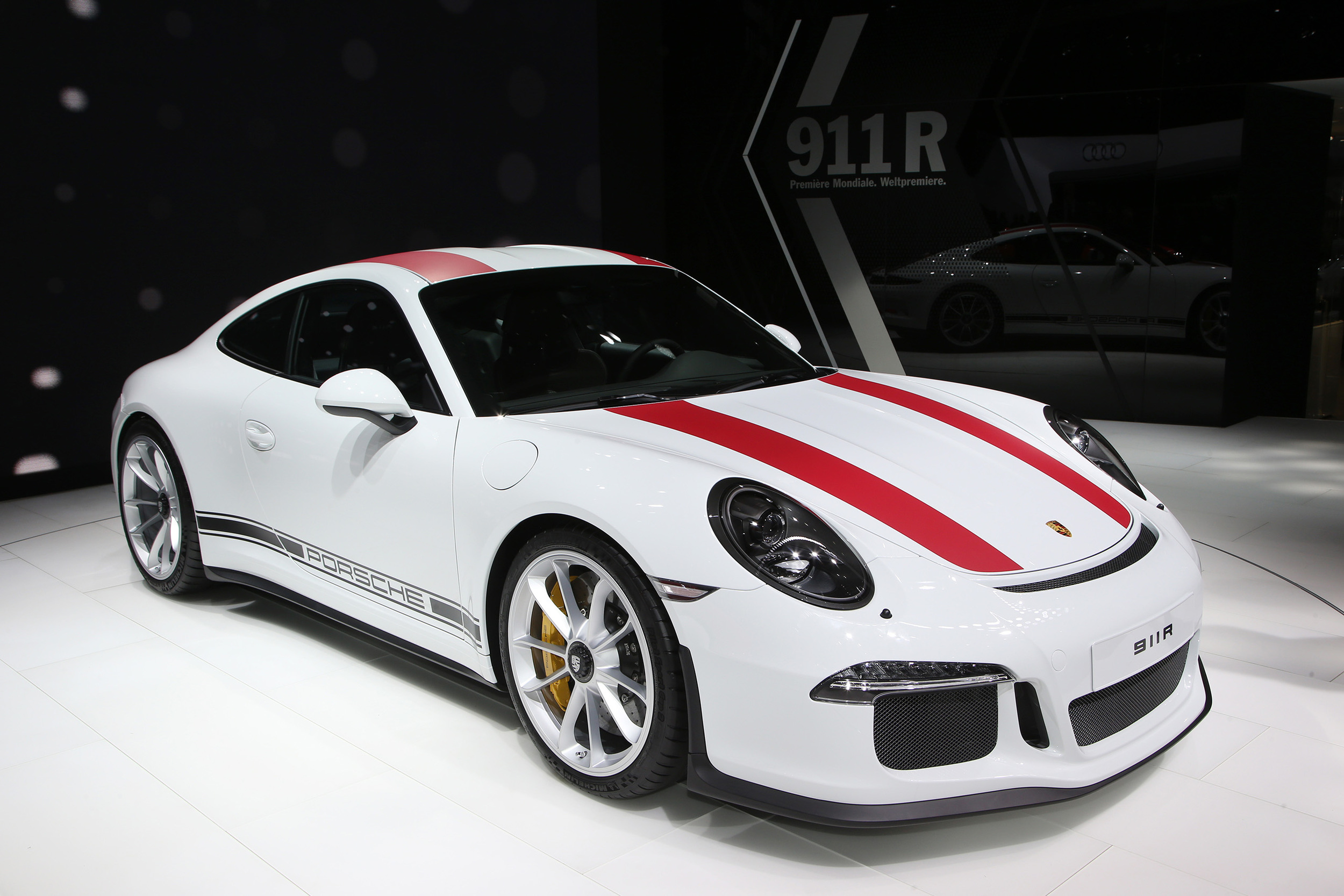
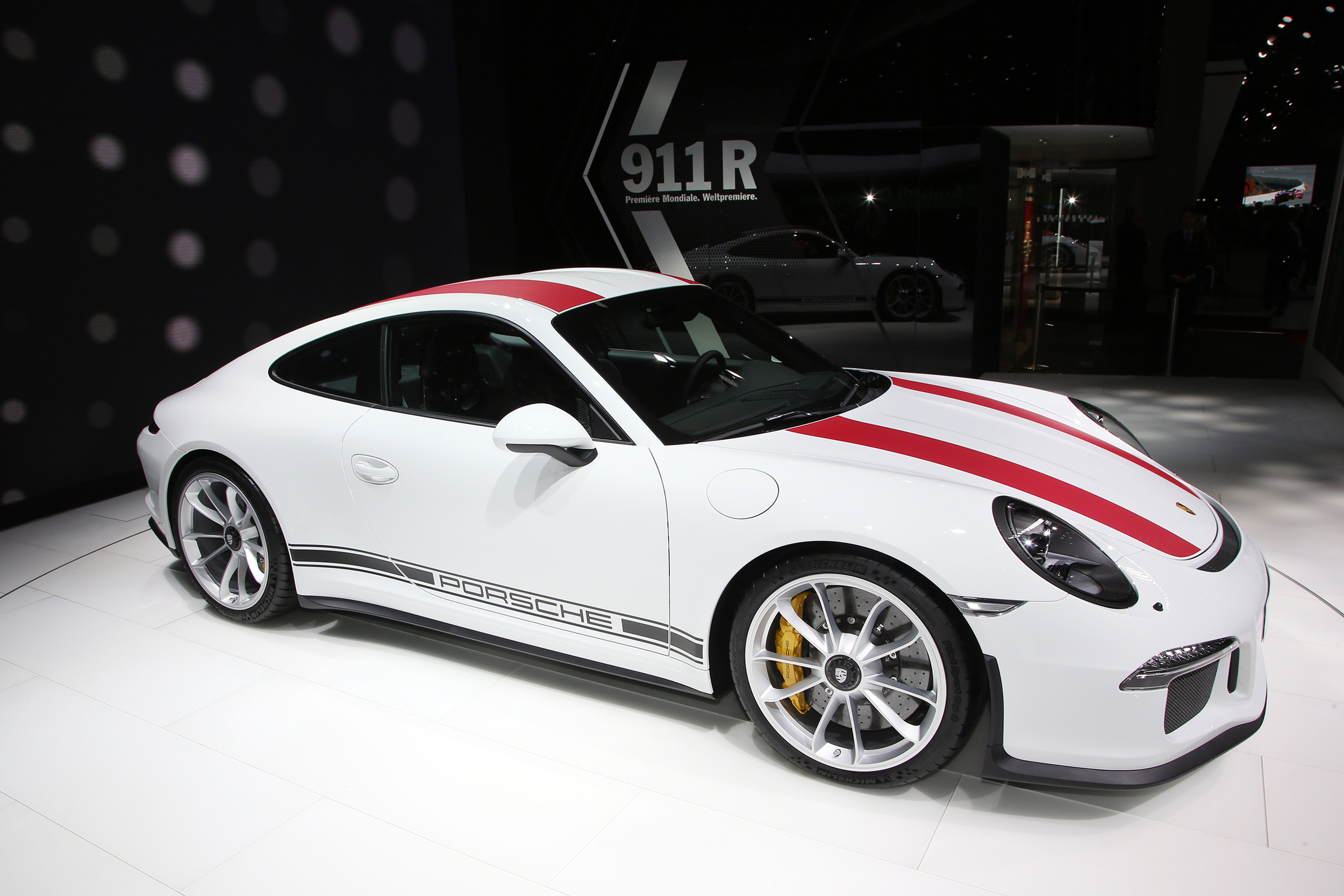
Porsche has presented its new 911 R pure-bred sports car in Geneva.
The new limited edition 911 R is inspired by its historic namesake, a road-homologated racing car from 1967. Produced as part of a limited production series, the original 911 R was campaigned in road races of the period, such as the Tour de France and Targa Florio, and also in world record runs.
Limited to just 991 examples worldwide, the 2016 model is powered by a 500 hp (368 kW) four-litre naturally-aspirated flat-six engine driving the rear wheels, mated exclusively to a six-speed manual transmission.
Like its predecessor, the new 911 R features a systematic lightweight construction and a ‘devotion to maximum performance’ - the special model has an overall weight of 1,370 kilograms making it the lightest version of the 911. The bonnet and front wheel-arches are made of carbon fibre and the roof is magnesium, which reduces the centre of gravity. Rear windscreen and rear side windows are lightweight plastic while additional weight-saving factors include reduced sound insulation in the interior and the omission of a rear bench seat. The optional air conditioning system and the audio system also hint at the 911’s slimming regime.
All the lightweight components of the body and the complete chassis originate from the 911 GT3. However, with a view to road use, the body does not have the fixed rear wing familiar with that model. Instead, a retractable rear spoiler shared with the Carrera models and a bespoke aerodynamic diffuser beneath the rear underbody provides the necessary downforce. The front and rear apron were also borrowed from the 911 GT3, with a re-designed spoiler lip installed on the front. The sports exhaust system consists of the lightweight construction material titanium.
From a standing start, 0-60 mph is possible in 3.7 seconds on to a top speed of 201 mph. Fuel consumption is 21.2 mpg on the combined cycle. Stopping power comes from Porsche Ceramic Composite Brakes (PCCB), also fitted as standard. Ultra High Performance Tyres of 245 mm width at the front and 305 mm width at the rear provide ‘assured contact’ with the road which are mounted on lightweight, forged aluminium wheels with centre-locking and matt-finish. For everyday versatility, a lift system can also be ordered, raising ground clearance of the front axle by approximately 30mm at the touch of a button.
Continuous coloured stripes in red or green over the entire mid-section of the vehicle provide a visual cue to the its 1967 predecessor. A further leitmotif is provided by the ‘Porsche’ script along each side of the vehicle. The driver and front passenger sit in a carbon-fibre bucket seat, trimmed with bespoke fabric centre panels in Pepita tartan design, a nod to the first 911 in the 1960s. Fabric pull straps on each door are a familiar hint to the focused intent of all 911 models from the GT department.
Ahead of the driver sits an R-specific 360 mm diameter GT sport steering wheel, and a short shift gearlever. Underlining the special nature of this limited production model, carbon trim strips in the interior with an embedded aluminium badge on the passenger's side indicate the limited number of each 911 R.
The new Porsche 911 R is available to order now, priced from £136,901 OTR with first UK deliveries are scheduled for June.
New Porsche 718 Boxster unveiled

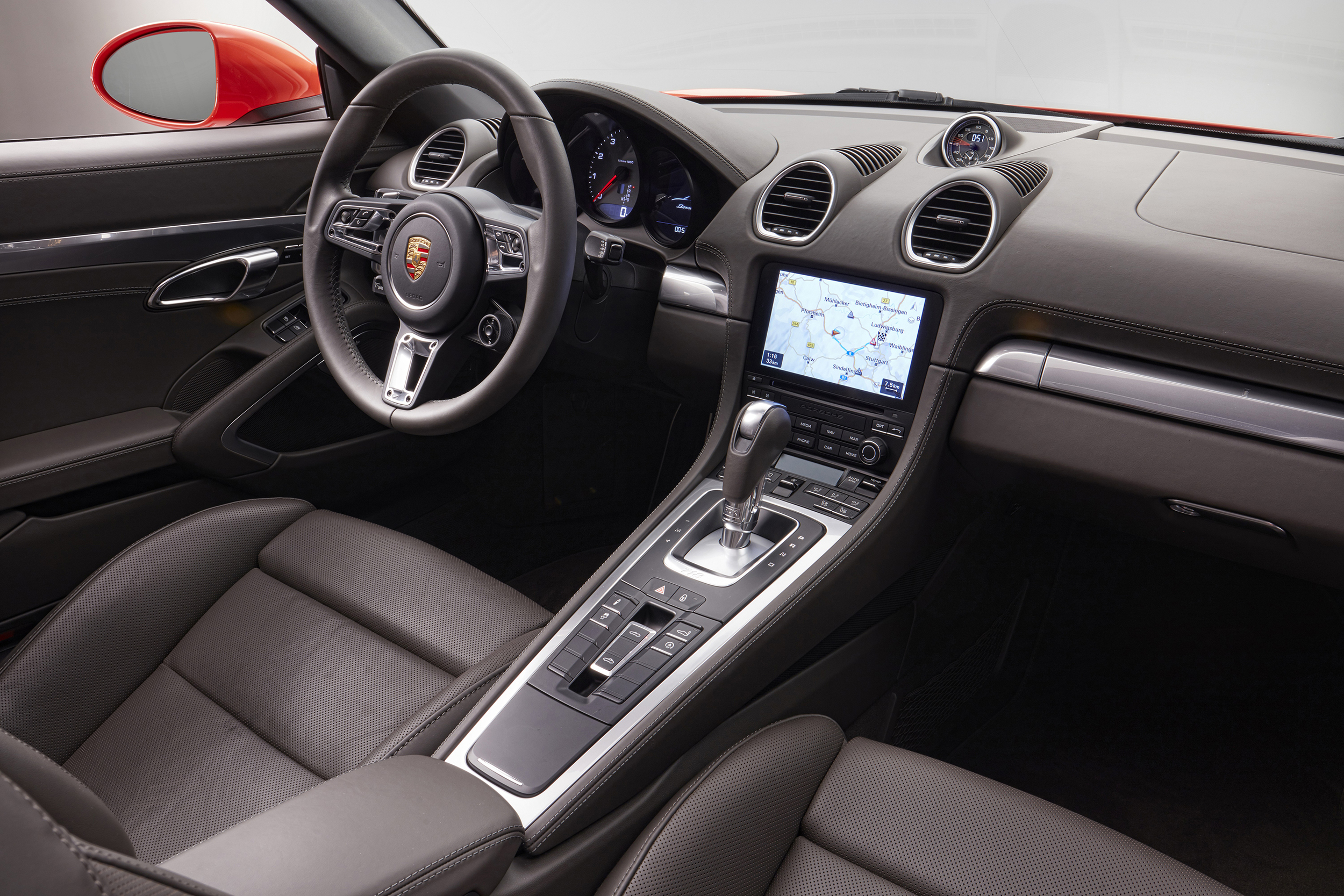
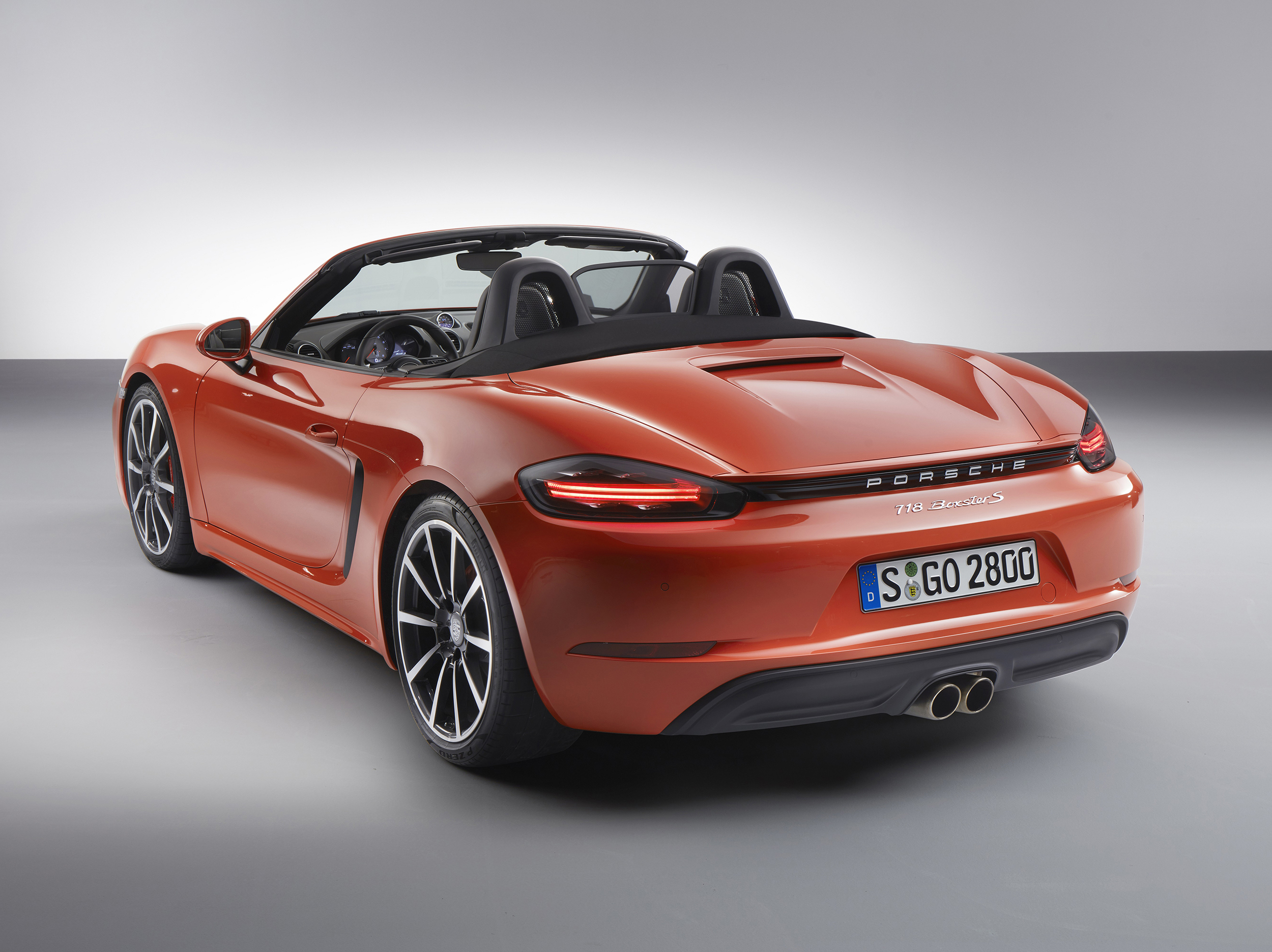
Porsche has revealed its new 718 Boxster and 718 Boxster S.
The new generation of the mid-engined two-seater is powered by a newly-developed range of flat four cylinder ‘boxer’ engines with turbocharging resulting in more power, more torque and greater efficiency. The new numbering from Porsche means the 718 sits beside the established line up with numbered identities – 911 Carrera, 918 Spyder, 919 Hybrid.
Porsche says the vehicle has been completely revised, except for the luggage compartment lids, the windscreen and the powered convertible roof. The front has a wider and ‘more purposeful’ appearance, with larger cooling air intakes for the new turbocharged engine. New design of the Bi-Xenon headlights feature integrated LED daytime running lights. The doors are now designed without door handle recess covers, while new 19-inch wheels are standard on the 718 Boxster S. 20-inch diameter wheels are available as an option. The rear has been redesigned with a much wider appearance – emphasised by the accent strip with integrated ‘Porsche’ badge - between the completely re-designed tail lights which are distinguished by three-dimensional LED technology and four-point brake lights.
Inside, a newly-designed dash panel frames the cockpit. In addition, the latest generation of Porsche Communication Management (PCM) with state-of-the-art touchscreen and mobile phone preparation included as standard. The navigation module is available as an option.
Developing 300 hp (220 kW) from its turbocharged 2.0-litre engine, the 718 Boxster S has a 2.5-litre engine, pumping out 350 hp (257 kW). Its greater power output is literally boosted by its use of a turbocharger with variable turbine geometry. The 718 Boxster – with optional PDK double-clutch automatic transmission and the Sport Chrono Package – sprints from 0 – 62 mph in 4.7 seconds (0.8 seconds quicker). The equivalent 718 Boxster S accomplishes this in 4.2 seconds (0.6 seconds faster). The top speed of the 718 Boxster is 170 mph, and the 718 Boxster S has a top speed of 177 mph.
Each 718 model is equipped with a six-speed manual transmission as standard. The Porsche Doppelkupplung (PDK), which now features fuel-saving ‘virtual gears’ previously introduced on the 911 model series, is available as an option.
Porsche says the ‘considerable’ power gain of 35 hp (26 kW) compared to the previous Boxster models is matched by the ‘impressive efficiency’ of the new turbo engines - with fuel economy improvements of up to 13 per cent. The four-cylinder flat engine with PDK has a NEDC Combined fuel consumption figure of 40.9 mpg (5.1 mpg more than the previous model). In the 718 Boxster S, the 2.5-litre turbo engine with PDK returns 38.7 mpg Combined (4.3 mpg more than the previous model). Matching the more powerful engines is new suspension tuning and uprated brakes.
Available to order now, prices start at £41,739 OTR for the 718 Boxster and from £50,695 OTR for the 718 Boxster S
Porsche to rename Boxster and Cayman
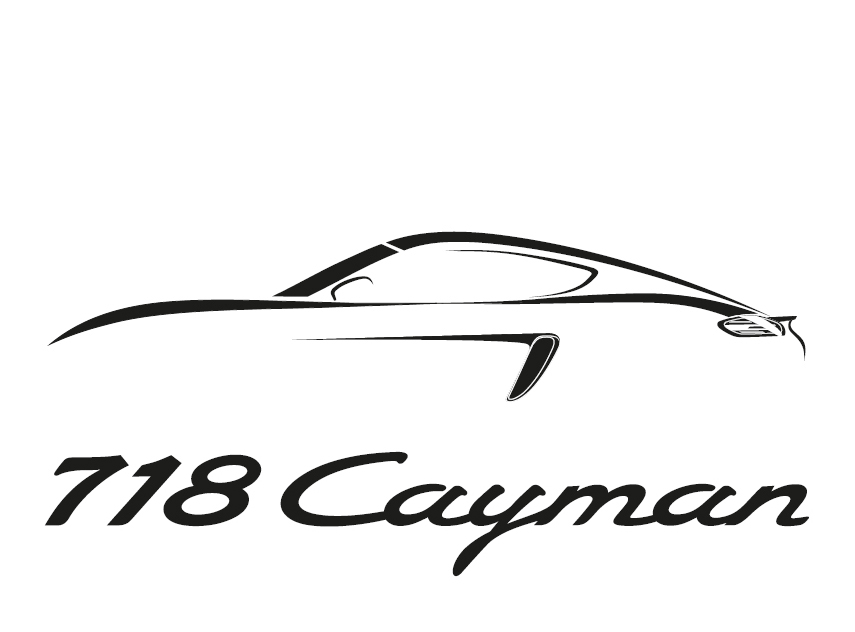


Porsche is to give new names to its two-door mid-engine sports cars, effective from 2016.
The Boxster and Cayman will be badged as the '718 Boxster' and '718 Cayman'. The Stuttgart sports car manufacturer's 718 designation is a reference to this type of sports car from the year 1957, which enjoyed much success in renowned car races of the period. The 718 Boxster and 718 Cayman will in the future, both will have equally powerful flat four-cylinder 'boxer' engines with turbocharging. The roadster will be positioned at a higher price level than the Coupe - as is the case for the 911 models.
The 718 model series is a continuation of the four-cylinder concept and the history of Porsche sports cars. In the late 1950s, the 718 - a successor to the Porsche 550 Spyder - represented the highest configuration level of the four-cylinder flat engine. The 718 took first place between 1959 and 1960 at the legendary Italian Targa Florio race in Sicily. At the 24 Hours of Le Mans race in 1958, the 718 RSK with its 142-hp four-cylinder engine scored a class victory.
Concept Car, Electric, Vintage Car, Sports Car, News
Porsche gives all-electric Mission E the go-ahead



The supervisory board at Porsche HQ have given the green light to the company's first 100 per cent electric car.
Confirming the Mission E project, Dr. Oliver Blume, Chairman of the Executive Board, at Porsche described the news as: "beginning a new chapter in the history of the sports car."
The Mission E concept car debuted at the Frankfurt Motor Show in September. The electric sports car combines 'outstanding driving performance' with day-to-day practicality. The four-door car with four individual seats has a system power output of over 600 hp (440 kW) and will accelerate to 62mph in under 3.5 seconds while offering a range of more than 310 miles. Charged via an 800-volt charger unit specially developed for the car, the lithium-ion batteries integrated within the vehicle floor have enough power again for 80 percent of the range after just 15 minutes. The vehicle can optionally be 'refuelled' wirelessly by induction via a coil set into the garage floor.
With the Mission E project, Porsche says it is 'continuing to back sustainable growth' with more than 1,000 new jobs are being created. The company will be investing around 700 million euros in its main site. Over the next few years, a new paint shop and a new assembly plant will be built. The existing engine factory is also being expanded for the production of electric motors. In addition, the existing body shop is being enlarged.
Dr. Wolfgang Porsche, Chairman of the Supervisory Board of Porsche AG: "With Mission E, we are making a clear statement about the future of the brand. Even in a greatly changing motoring world, Porsche will maintain its front-row position with this fascinating sports car."
Dr. Oliver Blume continued: "We are resolutely taking on the challenge of electric mobility. Even with solely battery-powered sports cars, Porsche is remaining true to its philosophy and offering our customers the sportiest and technologically most sophisticated model in this market segment."
The new vehicle is due to be launched at the end of the decade.
